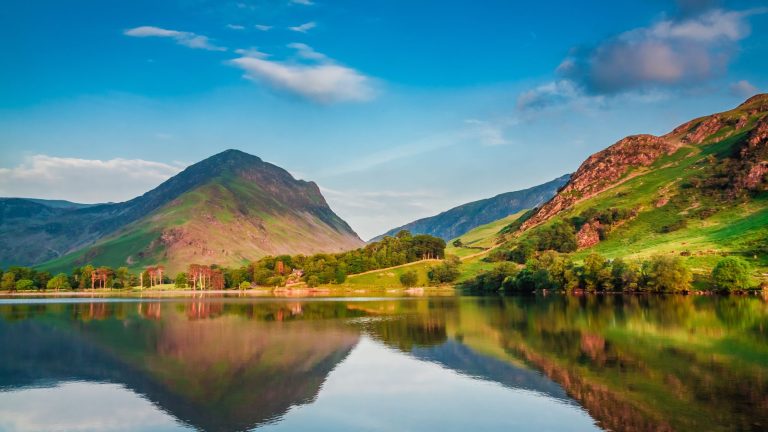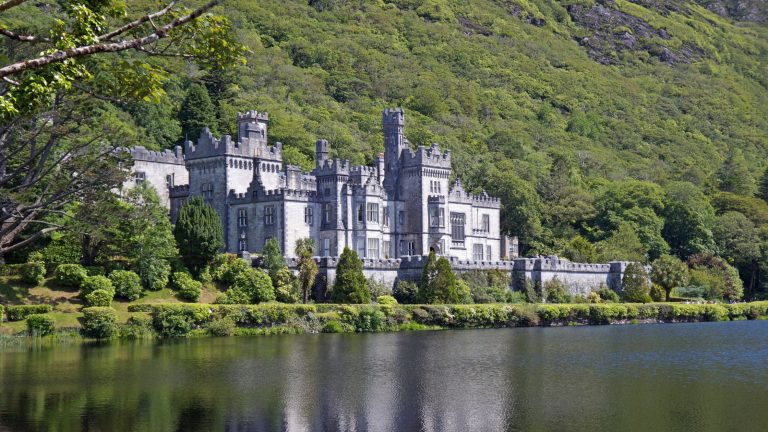Slovenia’s Alpine Lakes is Where Fairytales Meet Family Adventure
Slovenia delivers what Switzerland promises, at half the price and without the crowds. This Alpine nation—named the world’s first Green Destination—combines emerald lakes, dramatic gorges, and Mediterranean coastline in a compact package that lets families experience mountain mornings and seaside afternoons on the same day.
For 2026, these glacial waters and surrounding wilderness offer outdoor families an unmatched European lake adventure where living traditions and pristine nature create memories that outlast any theme park.
Lake Bled’s island church rising from turquoise waters creates the fairytale scene. Still, it’s the authentic experiences—riding century-old wooden boats rowed by families who’ve held the privilege since 1590, swimming in glacial waters, and cycling car-free trails through alpine meadows—that transform a vacation into something extraordinary.
With 60% forest coverage, 28,000 kilometers of rivers, and Europe’s most progressive sustainability initiatives, Slovenia proves that remarkable adventures and environmental stewardship aren’t mutually exclusive. Peak season runs June through August, but savvy families choose September when temperatures remain warm, crowds dissipate, and accommodation prices drop by 30-40%.
Discover the top things to do in Slovenia with your family using our friendly guide.
What makes Lake Bled and Bohinj worth the journey?
Lake Bled captures imaginations with its castle-crowned shores and Slovenia’s only natural island, but neighboring Lake Bohinj—the country’s largest natural lake—offers families something equally compelling: space to breathe. At Lake Bled, traditional pletna boats ferry visitors to Bled Island for €18-20 per adult and €10 per child (2025 rates, expected similar for 2026). These flat-bottomed wooden vessels, propelled by standing rowers using 3-meter oars, represent a living heritage passed father to son since Empress Maria Theresa granted exclusive rights to 22 families in the 1740s. The 20-minute journey culminates at the baroque Church of the Assumption, where 99 stone steps challenge newlyweds—tradition dictates grooms carry brides upward without her making a sound.
After your island visit, the 6-kilometer paved path circling Lake Bled invites cycling or leisurely walks, with strategic stops at Café Belvedere for the legendary kremšnita—Bled’s cream cake. Since 1953, over 16 million slices of this seven-centimeter cube (puff pastry, vanilla custard, whipped cream) have been served, becoming Slovenia’s most iconic dessert. Local wisdom suggests one lap around the lake burns exactly one kremšnita’s 214 calories, a calculation families gleefully test.
Lake Bohinj, 30 minutes away, unfolds within Triglav National Park’s heart. The Bohinj Standard Package (€39 adults, €20 children ages 6-14 for 2026 based on 2025 pricing) bundles an electric boat ride across the 4-kilometer lake, the Vogel cable car ascending to 1,535 meters, and entry to the 13th-century Church of St. John the Baptist with its remarkable medieval frescoes. The electric boats—Slovenia’s Zlatorog and Triglavska Roža—depart Ribčev Laz hourly during summer (every 40 minutes in peak July-August), gliding passengers past swimming beaches and forested shores where water temperatures reach a swimmable 22°C by late July.
At Ukanc, the western terminus, families board the Vogel cable car for the eight-minute ascent. From the summit station, the free Orlove Glave chairlift (weekends, May 15-November 1) extends to 1,682 meters, revealing panoramic views of the Julian Alps and Lake Bohinj shimmering far below. Multiple easy hiking trails crisscross the alpine meadows—wildflowers peak in late May and early June—while the summit restaurant serves mountain hut classics and cold drinks. The cable car operates year-round; winter transforms Vogel into a family-friendly ski resort with 22 kilometers of gentle slopes.
Where do adventure and accessibility intersect for families?
Vintgar Gorge, four kilometers from Bled, demonstrates Slovenia’s genius for making dramatic landscapes family-accessible. The 1.6-kilometer wooden walkway hugs vertical cliff faces, crossing 50 bridges above the Radovna River’s turquoise torrents before reaching the 16-meter Šum Waterfall. For 2026, expect entrance fees around €15 adults and €5 children ages 3-15 (2025 rates), with guided afternoon tours available at €25/€15 including shuttle transport. The gorge operates April through early November, opening at 7:30 AM during peak July-August to accommodate early risers who avoid midday crowds. Helmets are mandatory (provided free, but €50 penalty for loss), and the 45-minute one-way walk requires supervision for young children—railings exist, but cliff edges remain exposed.
Mostnica Gorge near Lake Bohinj offers a quieter alternative with similar drama. Entry costs just €4 adults and €2 children during peak season (€3/€1.50 April-May and October), with access free after 5 PM. The 2-kilometer trail follows the Mostnica stream through sections narrowing to one meter between 20-meter walls, passing the curious “Little Elephant” rock formation before reaching Koča na Vojah mountain hut. This traditional refuge serves homemade strudel, buckwheat žganci (porridge), and cold beer to hikers—a perfect turnaround point for families, though energetic groups can continue 40 minutes to the Voje Waterfall cascading 21 meters.
For free gorge exploration, Pokljuka Gorge between Bled and the Radovna Valley offers Slovenia’s largest fossil gorge. The 2-kilometer trail follows Prince Andrej’s Galleries—wooden walkways built in 1930—past walls soaring 50 meters and through the Pokljuška Luknja cave hall with three natural windows. Zero entrance fee, recent renovations, and descriptive panels make this a budget-friendly alternative, though supervision remains essential given the exposed heights.
Tolmin Gorges in the Soča Valley showcase nature’s sculptural power where the Tolminka and Zadlaščica rivers converge at the lowest point in Triglav National Park (180 meters elevation). Expect €10 adults and €5 children ages 6-15 during July-August 2026 (€6/€3 during April, October), with advanced online booking strongly recommended since time slots now limit capacity. The 2-kilometer circular route—requiring 1.5 to 2 hours and good grip shoes on sometimes-slippery paths—features the 60-meter-deep Devil’s Bridge chasm and suspension bridges suitable for children over 110 centimeters height. Swimming is possible at the confluence, though water temperatures hover between 5-9°C even in summer.
Which thrills suit different ages and comfort levels?
Straža Bled’s summer toboggan delivers accessible adrenaline just 10 minutes’ walk from Lake Bled’s center. The chairlift ascends Straža Hill, then families pilot individual sleds down the 520-meter track dropping 131 meters, with hand brakes allowing speed control up to 40 kilometers per hour. For 2026, expect approximately €15 adults and €10 children ages 8-14 for the chairlift plus three rides (2025 pricing; the €22/€16 figures in some sources appear outdated). Children over six ride solo; younger ones accompany adults. Operations run April through September, with peak summer hours 10 AM-8 PM. Arrive before 10:30 AM or after 3 PM to avoid hour-long queues.
Planica Zipline—the world’s steepest—follows the profile of Planica’s ski jump for a 566-meter flight reaching 85 kilometers per hour. The 40-45 second descent operates year-round (weather permitting) with advance online booking mandatory. Pricing remains steady at €29 solo descent and €49 tandem for 2026. Solo riders must be age 10+ (minimum 140 centimeters, 30 kilograms); tandem options accommodate children as young as five (minimum 120 centimeters) with parents, though combined weight cannot exceed 120 kilograms.
The Soča River’s family rafting sections provide gentler introduction to whitewater. Reputable operators charge €65-72 adults and €50-58 children (plus mandatory €12.50 river permits per person) for the Boka-Trnovo route—8 kilometers of Class II-III rapids suitable for non-swimmers ages 6+ wearing provided life vests. Departures run daily June through August, with May-June offering higher water levels and July-September warmer conditions. Wetsuits, helmets, neoprene shoes, and complimentary photos come standard. The emerald-green water, fed by glacial sources, maintains 10-15°C temperatures even in summer, making wetsuits essential rather than optional.
Beyond the famous lakes: What hidden gems await discovery?
Lake Jasna near Kranjska Gora rewards families with turquoise perfection minus Lake Bled’s crowds. Two interconnected artificial lakes rest against Mt. Prisojnik’s dramatic north face, with the iconic Zlatorog statue (golden-horned ibex from Slovenian legend) providing Instagram-worthy family portraits. Parking costs €2 per hour (card payment only); lake access and swimming remain free. Water temperatures reach 25°C in the northern lake by late summer, while the southern lake hovers around 17°C. A three-level wooden diving platform, sandy beaches, and a 15-minute circular walking path make this ideal for toddlers through teenagers. In winter, when the lake freezes, free ice skating and the annual Ice Trophy hockey tournament transform the setting into a Nordic wonderland.
Slovenia’s 47-kilometer coastline concentrates family-friendly beaches around three historic towns. Izola’s San Simon Beach consistently ranks as the region’s top family destination, with shallow water extending far from shore—perfect for young children—plus playgrounds, water slides, floating ocean playgrounds (summer months), beach volleyball, tennis, and mini-golf. Portorož Central Beach offers 25,000 square meters of sand and grass with full resort amenities, while Piran’s Fiesa Beach, a 15-minute walk from the medieval town center, combines shaded lawn areas with play equipment beneath Venetian-influenced architecture. All Slovenian beaches provide free access by law, with parking and amenities priced separately. Best swimming months span June through September, with July-August peak season bringing warmth and crowds in equal measure.
The 11-kilometer Bohinj Cycle Trail represents Slovenia’s commitment to car-free family adventure. This dedicated, paved path circuits between Lower and Upper Bohinj valleys, following the Sava Bohinjka River through alpine villages showcasing traditional double hayracks (toplar)—architectural features unique to this region. Bike rentals in Bohinjska Bistrica average €16 daily, including helmets and locks, with children’s bikes and trail-a-bike attachments available. The flat to gently rolling route passes swimming spots, picnic meadows, and cafes serving local specialties, making this an all-day excursion when combined with village exploration and waterside breaks.
How should families plan their 2026 Slovenia lake adventure?
Peak season (June-August) delivers warmest weather and full operational hours but commands premium prices and advance booking requirements. Accommodations in Lake Bled and Bohinj during July-August should be reserved 2-3 months ahead, with car rentals (highly recommended for families) requiring similar lead time—especially for automatic transmissions. Shoulder season September emerges as the strategic sweet spot: temperatures remain pleasant (18-22°C), Lake Bohinj stays swimmable into mid-month, crowds vanish as schools resume, and accommodation prices drop 30-40%. The trade-off arrives in October when rainfall increases, mountain huts close, and attractions reduce hours.
Car rental proves essential for accessing remote gorges, mountain trailheads, and efficiently linking attractions with children. Expect €50-75 daily for family-sized vehicles during peak season (€40-55 shoulder season), with child seats adding €9 daily. Slovenia’s compact scale means Lake Bled sits 55 kilometers from Ljubljana Airport (45 minutes), Lake Bohinj another 30 minutes beyond, and the coast 2.5 hours southwest—everything within a comfortable driving day. Public buses connect major points adequately, but with irregular schedules and limited luggage space, families of three or more find rental cars both cheaper and liberating.
The Ljubljana Card (€41 for 24 hours, €49 for 48 hours, €54 for 72 hours) bundles free entry to 30+ attractions including Ljubljana Castle, Zoo, and museums, plus unlimited city buses, free bike rental, and airport bus transfers. For cave enthusiasts, the Postojna Cave and Predjama Castle combo ticket (€49 adults, €29.40 children ages 6-15) provides entry to Slovenia’s most-visited cave system and the dramatic castle built into a 123-meter cliff face. Both sites warrant 2-3 hours each; the cave maintains a constant 10°C temperature requiring jackets year-round.
Weather patterns favor July-August for swimming (lake temperatures 20-24°C) but bring afternoon mountain thunderstorms. May-June offers wildflower hiking and fewer tourists but water too cold for swimming. September provides the ideal middle ground—stable weather, warm-enough water early in the month, and significantly reduced visitor numbers. Most outdoor attractions operate April through October, with exact 2026 dates announced in early spring. Confirm all pricing and hours directly with attractions in January-March 2026, as official rates hadn’t been published as of October 2025.
The Slovenia difference: Value meets values
Slovenia costs 48-50% less than Switzerland for comparable Alpine experiences, according to multiple traveler reports. A family of four spending €200 daily on activities, dining, and mid-range accommodation in Slovenia would face €350-400 for equivalent experiences across the Swiss border. Beyond economics, Slovenia’s designation as the world’s first Green Destination reflects genuine environmental commitment rather than marketing rhetoric—60% forest coverage, protected national parks, free local transport with cards like the Julian Alps pass, and car-free zones around major attractions demonstrate sustainability in practice.
Lakeside accommodations through platforms like Booking.com and Airbnb range from renovated farmhouses in Bohinj’s Stara Fužina village (offering farm-fresh breakfasts and mountain views) to modern apartments near Bled with pools and gardens. Tourist farms—over 850 exist nationwide—let children feed animals, collect eggs, and taste homemade cheese while parents appreciate the authentic hospitality absent from resort chains. Properties within Triglav National Park provide trail access from your doorstep, while coastal apartments in Piran and Izola combine medieval charm with beach proximity.
Lasting Memories
Slovenia’s lakes deliver Europe’s Alpine drama without Switzerland’s prices or Austria’s crowds, wrapped in authentic traditions that haven’t been theme-parked into extinction. When pletna boatmen row your family across Lake Bled using techniques passed down since the 16th century, when your children swim in glacial waters below Julian Alps peaks, when you cycle car-free paths through wildflower meadows where cows wear bells—these aren’t manufactured experiences but living culture preserved through genuine commitment to sustainability and heritage.
The 2026 equation proves straightforward: exceptional natural beauty plus affordable access plus compact distances equals an outdoor family vacation where adventure doesn’t require choosing between your children’s excitement and your budget’s survival. Slovenia solved that equation while much of Europe watched. Smart families will respond by booking September flights before this secret escapes fully into mainstream consciousness.






